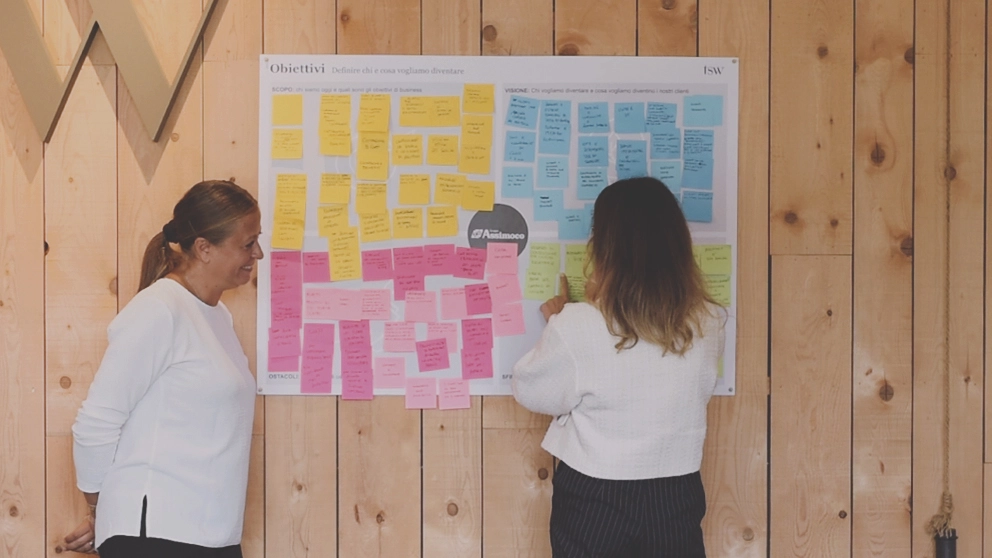Engaging people in your rebranding for a stronger emotional connection and longer lasting results.

In a constantly evolving scenario like the contemporary one, rebranding proves to be an effective tool for renewing corporate identity. In TSW, during this process, we recommend putting people at the center to ensure a greater emotional connection with the target audience and obtain a qualitatively better result.
This article will explore the importance of involving people in the renovation process and how that involvement can lead to lasting meaningful results for the future of the companies we work with.
Let’s start from the beginning. What is rebranding?
Rebranding is the process of modifying, remaking or renewing the image of a company or product in order to redefine its identity and market positioning. In essence, rebranding implies a significant change in the branding strategy and overall image of the company.
How a rebranding is born
After having defined that you want to change your image, what we recommend to our customers is to listen and share the values, objectives and expectations that you want to convey and achieve with the new image.
These moments of sharing offer a unique opportunity to significantly involve stakeholders. Those who collaborate with us are no longer limited to imposing radical changes “with their eyes closed”, but choose an inclusive approach that involves employees, customers, suppliers and the community in which they operate.
Actively involving these people in the process not only makes them an integral part of the transformation, but also allows you to leverage their knowledge, ideas and enthusiasm.
Through this involvement, people develop a sense of ownership and belonging, becoming authentic brand ambassadors and supporters of the new corporate positioning.
The phases of creation between creativity and co-design
Once the new branding objectives, values and expectations have been framed, a phase of creative research begins, where style, colours, shapes and ways of communicating that can characterize the company’s image are investigated.
In this phase it is important to be able to translate these creative concepts into moodboards and examples, so that they can be validated together with the stakeholders.
Once the characteristics to be given to the new identity have been defined, the actual planning begins.
Through listening, a moment is created to actively involve stakeholders, and collect their ideas and considerations to identify the solution that can best respond to the needs that have previously emerged.
Once the most suitable solution has been found, everything related to rebranding will be redefined and optimized, such as: the name, the logo, the brand identity, etc.
Monitoring and adaptation
To capture attention and maintain the historicity and recognition of the brand, it is important to gradually communicate the new image, creating curiosity and the desire to discover the new features.
Even in this phase, listening to and involving people is important to evaluate the effectiveness of the initiatives and adapt the rebranding strategy accordingly, where possible.
Maintaining an open and constant channel of communication with the people involved promotes a greater level of adherence and success in the long term.
It’s important to recognize that people are able to provide valuable information and suggestions that can contribute to the evolution and optimization of the corporate identity consistently over time.
Conclusions
Rebranding is not just a process of renewing the corporate image, but an opportunity to create an authentic sense of renewal that is a child of the community.
Engaging people through co-creation allows for meaningful and sustainable long-term results.
The people involved become active partners in this process, contributing to the creation of an authentic corporate identity, responsive to the needs and expectations of all the stakeholders involved. For us, involving people is an essential key to the long-term success of our clients in a landscape where companies are constantly evolving.
Transparency is essential: people must be promptly informed about the reasons for the rebranding, the objectives and the challenges that the company is facing. This fosters a climate of trust and reduces resistance to change.